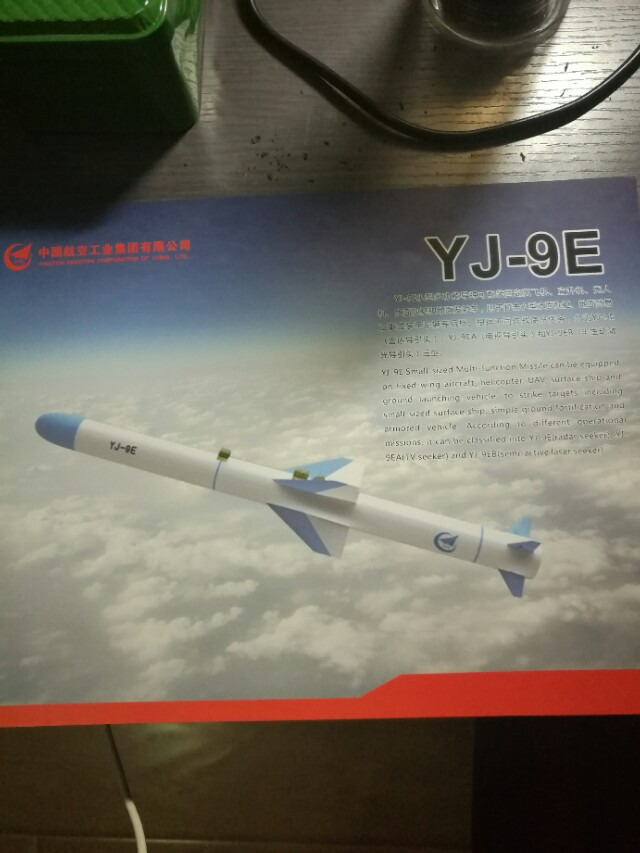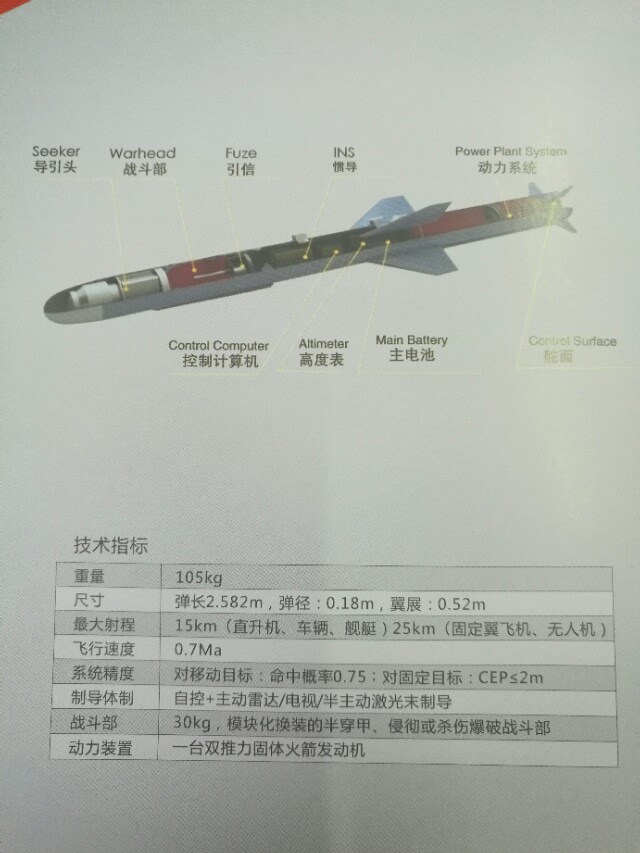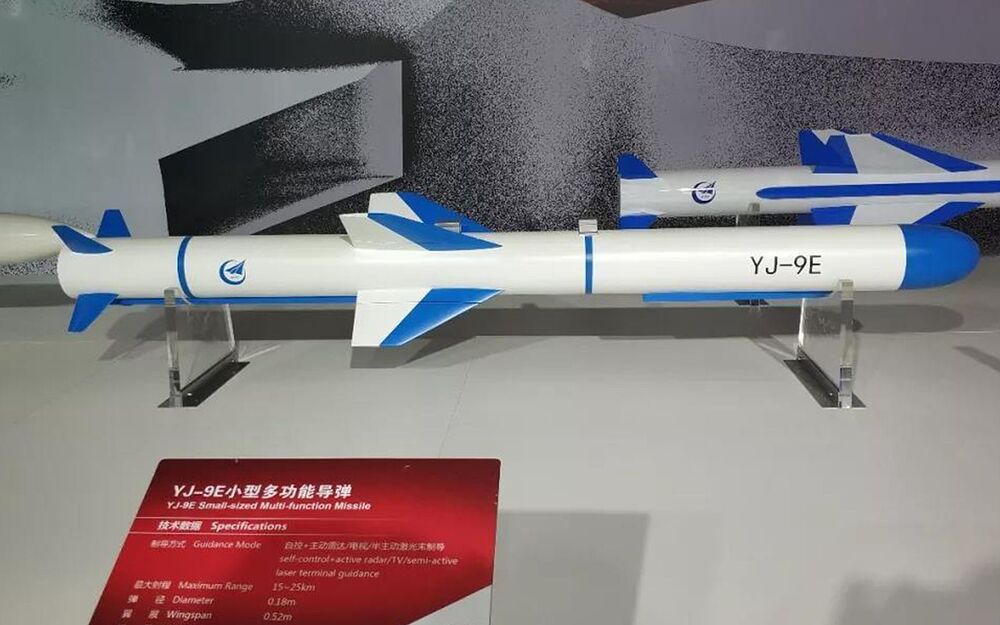- Yes, as a tech tree vehicle
- Yes, as a premium vehicle
- Yes, as an event vehicle
- Yes, as a squadron vehicle
- No, I would not like to see the L-15B in game.
The first L-15B to take off in PLAAF colors was revealed on December 21, 2017. The large leading edge root extensions (LERX) on this aircraft are not just for show - the plane is capable of hitting 30+ degree angle-of-attack during maneuvers and its engine intakes are specifically designed to retain as much air as possible during intense turns. Hongdu describes the plane as having the performance of a third-generation jet fighter but in all regards save top speed it would be more appropriate to describe it as fourth-generation.
Introduction
The past 5 years have seen a peculiar little plane darting around Chinese skies. From the bottom, it looks like a Hornet. The nose evokes that of an F-16. The overall layout is somewhat similar to the Yak-130. All of this is in a pint-sized package. What is this mysterious aircraft? It’s Hongdu’s very own homegrown L-15B Falcon light fighter/attacker. Well, almost. On paper, it has everything. It’s maneuverable, it’s supersonic with a very good thrust/weight ratio, it has advanced avionics to simulate weapons for training, and it can use the real deal when need be to replace aging J-7 and Q-5 aircraft in the attack role. In practice, the little Falcon’s future is hazy due to the lack of one very critical component: an engine. So the story has gone for the past few years…
I don’t mean to make this post about an engine instead of an aircraft, but the story of the L-15B is inexorably linked to its beating heart or lack thereof. The L-15A variant is making a splash in the international market, but without an afterburning engine the L-15B concept is dead in the water. This hurts the PLAAF, PLANAF and foreign customers alike. Fortunately, there are good tidings - whispers on the wind promising an auspicious future for the lightweight bird of prey. As this is a developing story, it’s best to look at the plane’s past, present, and future. The L-15B is poised to make a large impact on the international market if its domestic powerplant enters serial production and is an exciting prospect for the future direction of Chinese aircraft development.
DISCLAIMER: This is still a very new aircraft and many of its aspects are not 100% clear or confirmed, especially so in the West, so I was not able to go as deep into the history as I might have liked. The L-15B and its purported engines, a pair of WS-17 “Minshans”, are still pretty tightly under wraps. If news about this variant comes to my attention, I will update this post whenever possible. Feel free to let me know in the comments if you find any new information.
TL;DR
- Extremely lightweight (and tiny!) 4th-generation multirole jet trainer/fighter
- Very high maneuverability for a stable airframe with a good thrust/weight ratio
- Supersonic, but not by a large margin - likely to be outrun
- Advanced avionics: digital RWR, cockpit MFDs, and PESA radar
- Small banks of chaff/flare dispensers for emergencies
- Lightweight short range PL-5EII and medium range PL-12 air-to-air missiles
- Various guided munitions including glide bombs, laser-guided bombs and anti-ship missiles
- No internal gun - centerline 23mm gun pod available
Why it should be in the game: The L-15B is emblematic of the future direction of China’s military aviation industry and provides a high-tech fully domestic option for a competent light fighter/air support platform. It will most likely be workable in air battles though it will be on the back foot compared to air superiority fighters. Its real strength comes through in ground battles where the relatively short range on its radar and of the PL-12 compared to future missiles such as the AIM-120C or Meteor will not be as severely limiting. The L-15B’s focus on smaller guided munitions for ground targets mean that you will have a respectable carrying capacity for dealing with enemy tanks too. It’s not just a missile sled, either, since it’s maneuverable enough to get into exciting dogfights. The plane also provides an interesting dynamic for player choice. Because it’s so lightweight, the additional weight of the PL-12, for example, will matter a lot more than that weight would on a J-11B. Therefore the L-15B will engage the player not only during battle but in the hangar, too, where crafting a loadout which maximizes your performance without sacrificing too much offensive potential will be satisfying.
History
L-15 lead-in fighter trainer (LIFT) prototype ‘06’ taxis down a runway in China. This was the first L-15 to fly with afterburning engines and did so for the first time on October 26, 2010. Besides the afterburning engines, ‘06’ lacks most of the features of the L-15B.
Hongdu Aviation Industry Group is no stranger to training aircraft, having produced various piston engined basic trainers for the PLAAF. By the 1990’s Hongdu was also producing the JL-8 intermediate jet trainer. The PLA were soon interested in acquiring an advanced training aircraft with highly modern technology to keep up with their main fighter force. A capable advanced trainer would reduce the amount of time pilots would need to spend training with dedicated trainer variants of existing fighters due to establishing fundamental skills in the trainer. Two manufacturers stepped up to home plate for a chance to produce this new trainer: Guizhou, who created the JL-9 for this purpose, and Hongdu. As early as 2000 a new supersonic advanced trainer was in the preliminary design stage, with Hongdu reaching out to Yakovlev OKB for technical consulting due to their experience with developing the Yak-130. Despite superficial similarities to the Yak-130 Hongdu’s design team under lead designer Hong Zhang was responsible for the vast majority of the design work according to Yakovlev’s Director General Oleg Demchenko. This new aircraft would be known as the L-15 and a mockup would be unveiled at the Zhuhai air show in late 2004. Its first flying model was ready in September 2005 but issues with the engines, Ukranian AI-222 turbofans, pushed the first flight back to March 13, 2006 where it would fly with Slovakian DV-2 engines instead. In March of 2008 advanced jet trainer (AJT) prototype ‘03’ flew with AI-222s. During this time the PLAAF had already acquired the first JL-9s from Guizhou. Its development time was significantly lower because of how many advanced technologies were being incorporated into the L-15 such as fly-by-wire control and entirely new engines with full authority digital engine control (FADEC). As mentioned before the L-15 was designed from the outset with supersonic capability in mind. While most of the L-15s produced to date have been subsonic models with non-afterburning engines, afterburners for a supersonic version were always in mind and prototype ‘06’ was equipped with AI-222Fs, flying with them in 2010. The PLA found the subsonic version satisfactory and started procuring it as the JL-10 to be used alongside the JL-9 supposedly as early as 2013, though the first confirmed sighting of an L-15 in PLAAF colors was in 2016.
The first L-15B was unveiled with great fanfare in 2017. The full L-15B package includes a revised glass cockpit, radar warning receiver and IFF antennae. It seems that at least two prototypes were constructed, but probably only one or two more were produced if any. The gargantuan pitot tube on the nose does not appear to be standard and was probably used for extremely precise telemetry collection.
In the time between the first flight of prototype ‘06’ and 2017, Hongdu’s team had been hard at work developing a new project. The first produced airframe for a new version of the aircraft, called the L-15B, was revealed in May of 2017. It took what was already established with the initial LIFT prototype and added all the necessary features to produce a fully combat capable light fighter. While the JL-10 could already be armed, the L-15B took it to the next level with a radar warning receiver and IFF antennae along with the small PESA radar, afterburning engines and glass cockpit which were fitted to the LIFT prototype. The IFF and RWR showed that the plane was meant to be able to operate in actual hostile environments and not just simulated combat. Hongdu displayed a model of the aircraft at the 5th World Green Development Investment and Trade Expo in Nanchang which took place at the end of November 2018. Besides professing interest in pursuing environmentally friendly practices, Hongdu revealed with the model that the L-15B had two additional hardpoints compared to the L-15A, with three under each wing. Combined with the wingtip missile rails and centerline hardpoint the L-15B had a total of nine with a maximum takeoff weight of 11,600 kg. The afterburners, besides increasing top speed, allowed the L-15B to have shorter takeoff runs.
The “JL-10III” variant (L-15AW) entered service with the PLAAF relatively recently. Here, ‘1349’ rests on the tarmac (presumably after a landing due to the extended airbrake) at Changchun Dafangshen airbase in 2023 with the pilots looking toward the camera for a photo. The L-15AW is basically an L-15B without afterburners and retaining the seven hardpoints of the L-15A.
With all the strengths of the L-15B, it may seem odd that it has generally not been in the public eye as much as the more training-oriented L-15A. In fact, so far only L-15A/AW units have been procured, with Zambia being the first export customer in 2016 and later orders only happening in the last few years from Ethiopia and the Untied Arab Emirates. The reason behind this concerns the aircraft’s engines. China secured ~300+ AI-222/322 (with the AI-222 being mostly Ukranian made and the AI-322 being 100% Ukranian made but otherwise identical) engines for mass production of the JL-10 and in November 2021 placed an $800 million order for 400 more. According to available details, though, they did not order the afterburning AI-222F in quantity. The reason for this is frankly unclear as there was some speculation of L-15Bs becoming the premier second-line aircraft in the PLAAF, finally phasing out the J-7. Regardless, if you have even passing knowledge of current events you will recognize that the large deal for more engines had legendarily bad timing and as such none of the 400 AI-322 engines could be delivered. Despite this, Hongdu offered the UAE an option for a total of 48 AI-322 powered L-15As in 2023. This would require 96 engines to power the planes, plus more for spares since the original supplier cannot provide as of now. Over a third of China’s existing engine supply being sent to export while the up-and-coming trainer has a projected carrier variant and a mass production line under construction would logically be unacceptable, so is there a backup plan?
The WS-17 “Minshan” is something of a unicorn, not having been seen publicly for years. Is this the cure for the L-15’s powerplant issues, or will China need to secure engines from an external source? A reasonable assumption at this time suggests the former, but future events always have a chance of shaking things up in unexpected ways.
In March of 2024 it was announced that an L-15 had successfully flown with new, more powerful engines. Corroborating this with the plane’s production trends and the freedom with which a large export order was offered, a reasonable assumption can be made that the new engine is in fact the WS-17 “Minshan.” The WS-17 was first unveiled in 2012 at an expo. It is a small but highly advanced engine, keeping with the JL-10’s general manufacturing ethos of quality over quantity. The Minshan’s designers touted its advanced aerodynamic vanes with similar features to the venerable EJ200. However the pint-sized WS-17 was expected to develop a maximum of 5,000 kgf of thrust with afterburners. Despite promising characteristics the engine basically fell off the face of the earth by 2016 with the AI-222 being chosen to power the JL-10 and being ordered in quantity. With the unavailability of the AI-322, it seems that development of the WS-17 was restarted. This engine would develop more power than the AI-322 both with and without afterburner and would be completely assembled in China. In order to continue to produce JL-10s to expected demand as well as maintain healthy export orders for the L-15, Hongdu needs to get an engine from somewhere and the WS-17 appears to be that engine. However I could not find the WS-17 being specifically mentioned on Hongdu’s website nor in the news broadcast which revealed the upgraded engines. It seems that the PLA is still being secretive about the new powerplant, and at the time of writing it remains to be seen when the revised aircraft will finally be displayed.
Specifications
Hongdu L-15B
Dimensions:
- Length: 12.17 m (39 ft 11 in)
- Span: 9.48 m (31 ft 1 in)
- Height: 4.71 m (15 ft 5 in)
Weight:
- ~5,100 kg (11,244 lb) empty
- ~6,650 kg (14,661 lb) full fuel
- 11,600 kg (25,574 lb) maximum takeoff weight
Propulsion:
- Prototypes: 2 x Ivchenko-Progress AI-222F turbofan engine
- 2,520 kgf (5,556 lbf) static thrust each; 5,040 kgf (11,111 lbf) thrust total
- 4,200 kgf (9,259 lbf) static thrust with afterburner each; 8,400 kgf (18,519 lbf) thrust total
- Production (future): 2 x Guizhou Aeroengine Design Institute WS-17 turbofan engine
- 4,700 - 4,800 kgf (10,362 - 10,582 lbf) static thrust with afterburner each; 9,400 - 9,600 kgf (20,723 - 21,164 lbf) total
Maximum speed: 1,728 kph (1,074 mph)
Service ceiling: 16,000 m (52,493 ft)
Known Armaments:
- Guns:
- Up to 2 x 12.7 mm machine gun pod
- Up to 1 x 23 mm autocannon pod
- Air-to-air missiles:
- Up to 2 x PL-5B/PL-5EII IR-homing air-to-air missile
- Up to 2 x PL-12 (SD-10) active radar homing air-to-air missile
- Bombs:
- Up to 2 x 250 kg bomb
- Up to 2 x 500 kg bomb
- Guided bombs:
- Up to 2 x TL-20 GPS/laser-guided glide bomb
- Rockets:
- Up to 2 x 57 mm rocket pod
- Air-to-surface missiles:
- Up to 2 x YJ-9E anti-ship missiles
- Drop tanks:
- Up to 2 x 800 liter (211 gallon) drop tanks
Note: the L-15B can theoretically carry far, far more than this as shown by an export brochure, however these are the demonstrated integrated armaments of the L-15 family to date as far as I am aware.
Crew: 2
Additional equipment:
- PESA fire control radar (X band, 75 km range)
- Centerline targeting pod
- Ballistic computer: CCIP/RP (bombs, rockets, guns)
- Digital radar warning receiver
- Countermeasures dispensers:
- 2 x 6 + 2 x 9 large caliber countermeasures, 15 on each side of the fuselage (30 total)
- Digital MFDs
- Holographic HUD
- Duplicated flight controls
- Fly-by-wire
- Ejection seats
- IFF
Gallery
Sources
- https://www.hongdu.com.cn/c/2015-08-05/527207.shtml
- 喜讯!L15总设计师张弘被授予“全国劳动模范”称号 - 公司要闻 - 航空工业江西洪都航空工业集团有限责任公司
- 终于等到这一天 L15教练机换上岷山发动机 拥有更强战鹰之心_推力_国产_性能
- A.S.Yakovlev Design Bureau –:– company –:– publications –:– articles
- https://www.airforce-technology.com/projects/hongdu-l-15b-combat-trainer/?cf-view
- China's air force has a new ground-attack plane
- 【图】洪都公司多款产品亮相第五届绿发会 - 公司要闻 - 航空工业江西洪都航空工业集团有限责任公司
- https://www.airuniversity.af.edu/Portals/10/CASI/documents/Research/PLAAF/2021-02-16%20Initial%20Fighter%20Pilot%20Training.pdf?ver=CWRhXQPS7sgn1voTIxrdOw%3D%3D
- https://militarywatchmagazine.com/article/china-built-l15-uae-air-force
- Hongdu L-15/L-15B/JL-10H Supersonic Trainer / Attack Aircraft, China | Thai Military and Asian Region
- https://www.military.africa/2025/01/morocco-seeks-to-replace-aging-alpha-jet-with-chinese-l-15/
- https://quwa.org/daily-news/hongdu-aviation-industry-group-completes-first-l-15b-lead-fighter-trainer/
- Cooperation and development: Hongdu L-15B combat training aircraft (China)
- 中国又一型战机上舰,猎鹰终于搞定心脏病问题,不用指望乌克兰发动机_腾讯新闻
- https://www.youtube.com/watch?v=wzRTv2Yb2yg
- 教练-10 - 维基百科,自由的百科全书
- New contract of JSC "Motor-Sich" for the supply of AI-322 engines to China - ВПК.name
- Now fixed: China coach in UAE colors
- Chinese Military Aviation: Trainers




.jpg)








